Through the month of November I’ve been rewatching movies from a list I compiled of 30(ish) of my favorite movies of all time, and logging them on my Letterboxd, Instagram, and Twitter. It makes as much sense for me to post here as well.
Be warned – I won’t be spoiler-tagging any of my entries here, so scroll past if you see a poster for a movie you might want to watch blind some day.
1. Requiem for a Dream (2000)
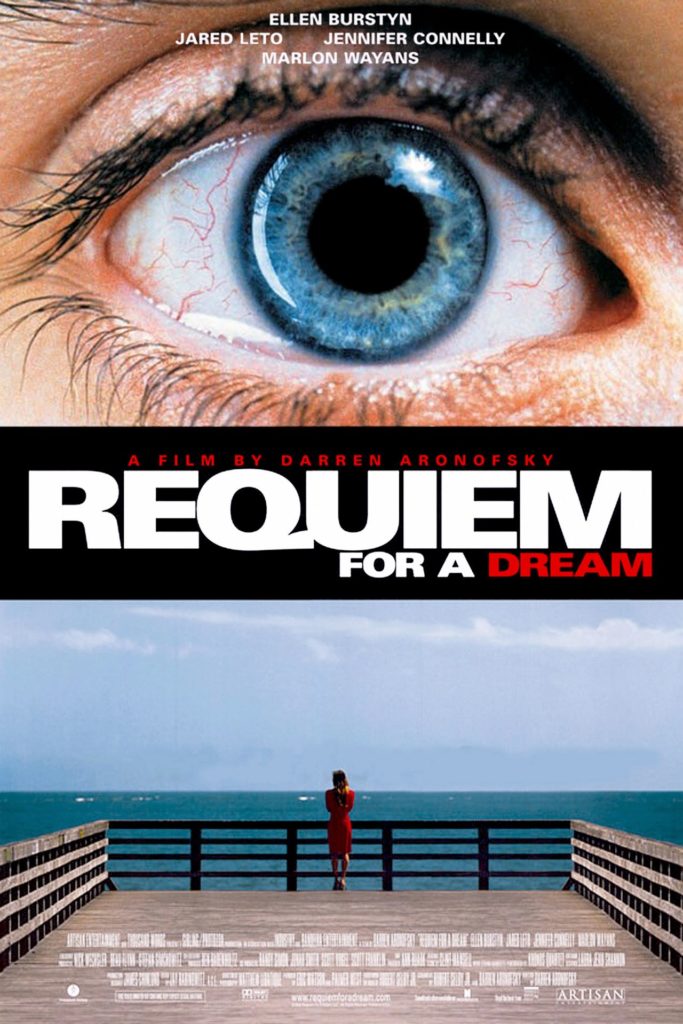
An almost comically heavy watch for the very first day of my marathon. Darren Aronofsky’s sophomore venture is just brutal. It gives no quarter, offers no hope – just the downward spirals of four drug addicts. So why did I choose to open Movievember ’22 with such a bleak film?
Requiem for a Dream was my “film awakening” moment, to use a term I’ve heard my former video professor use.
One thing I want to note is that I don’t have an extensive history of movie-watching; I didn’t watch a ton of films as a kid, or if I did I don’t think of those experiences as being meaningful or impactful on me today. Mostly, I watched whatever my parents put on the television – when my sister and I were home with Mom during the day, it was a lot of Friends and daytime soap operas. I didn’t especially care for either.
When Dad got home in the evening we’d watch whatever serial procedural they were interested in at the time, or a modern sitcom, or maybe football. But rarely did we watch movies together. There is a caveat; Dad was a relentless channel surfer. He might land on a pop culture classic and watch for ten minutes before snorting and changing the channel. When we went to the movie theater it was almost always for an animated kid flick. I specifically remember Over the Hedge and whichever Ice Age had the scary shark things. Neither are on my schedule for this month.
So my background in film doesn’t really start until high school, when I started to get the notion that there were a lot of great films out there that I hadn’t seen. I saw Blade Runner 2049 in theaters when it released – probably the second film responsible for my love of movies – and watched the original in preparation. I streamed Reservoir Dogs, Donnie Darko, and Trainspotting (all through less-than-savoury hosting sites, and all probably at the recommendation of a topics board on a forum site I’m too embarrassed and ashamed to admit that I used to frequent.)
I worked at a Game Stop at that time; my boss loaned me some DVDS, and that’s probably what really did me in. That stack included Black Swan, American Beauty, Children of Men, A Clockwork Orange (which I didn’t get to at the time), and this – Requiem for a Dream.
I’d never seen anything like it. The subject matter was dark, sure – but drug abuse is no less common in today’s media than sex or rock and roll. What stood out most to me then wasn’t necessarily the lighting, or the cinematography, or the writing, or even Ellen Burstyn’s show-stealing performance, even though all of those things impressed me greatly; it was the editing that blew me away.
Specifically, the scene in which Sara Goldfarb begins her grapefruit diet. One of the simplest, perhaps less impactful moments: Sara sits at a table. In front of her is a cup of coffee, a hard-boiled egg, and half a grapefruit. Each gets their own audio clue: crunch, bite, slurp. (This itself is a motif that Aronofsky gets massive mileage out of.) Hard cuts show the food being consumed without ever cutting away from the plate. I was doing very, very amateur video work for my high school’s broadcasting club at the time, and I thinking, “I see what they did here, and it’s not that complicated. But it’s clever, and I could do that.” As a young, very new videographer, it became my goal at that time to try to find equally clever methods of transitioning and editing.
Requiem for a Dream is a masterpiece. It’s one of the most paranoid films I’ve ever seen. I’ve seen films even this year that I’ve had a harder time watching – Titane comes to mind as a movie I watched, at times, through my fingers. Even Possessor a couple of weeks ago made me wince more than Requiem. But Requiem never wants you to look away; it demands your full attention, throws a monstrous, terrifying fridge at you, dares you to look away from Leto’s gangrenous arm, depicts one of the most disheartening and draining scenes of sexual humiliation in all of film. It never apologizes, it never lets up. And it’s perfect. Everything, from the 90s style montage editing that I love so much, to Mansell’s haunting soundtrack, to the underlying narrative of addiction and downward spirals by Hubert Selby Jr., is perfect. And it might be the most important film of my life.
2. Big Fish (2003)
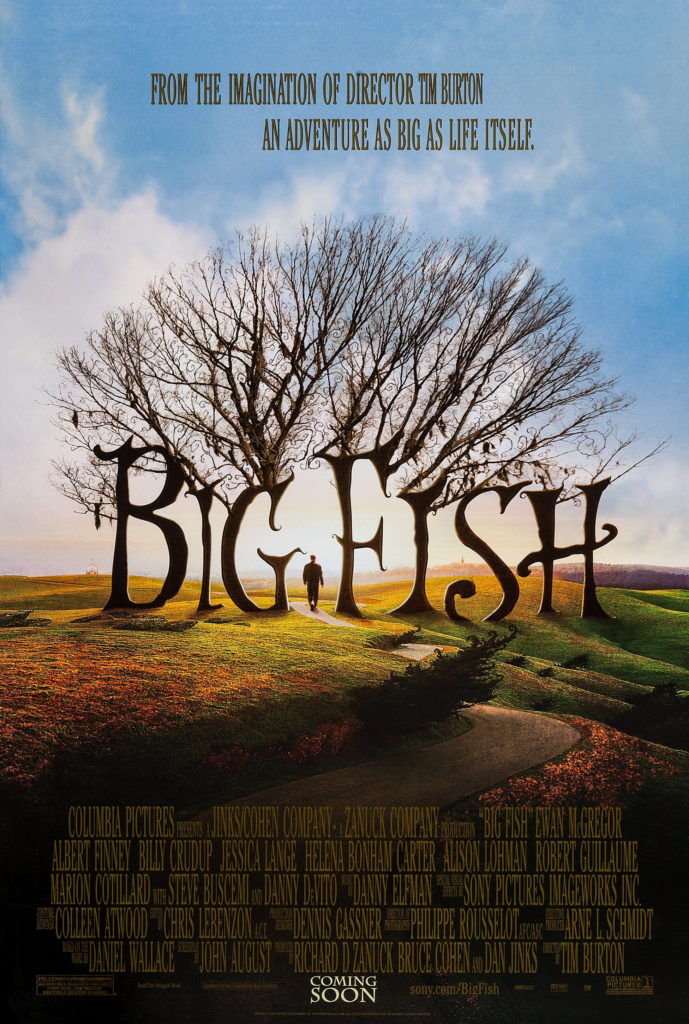
The plan was to watch Amélie for the second day of Movievember as a sort of breather, but that movie is incredibly hard to find. I’m pretty sure nobody knows who holds the licensing for it or something, but even with a VPN I just couldn’t get it to work out. I’ll still get to Amélie, though – the local library has a copy, or so the website says. Yay for public resources!
Instead, I watched Big Fish. This one never fails to get a couple of tears out of me, really just from the last fifteen minutes. Those fifteen minutes are the entire reason I watch the rest of the film, which I think of as being mostly just pretty OK. But then again – the ending wouldn’t have the same impact without the build-up from the rest of the movie, would it?
My main point is that I haven’t seen many on-screen deaths of a loved one that are as joyous, as hopeful, as happy, or relieving as Edward’s. It’s sad if you think of him as an old man who dies of cancer in a cot with only his son by his side. But the myth he builds and the stories he tells finally provide some comfort in the end, and only because his son comes around and realizes how vital storytelling is in our lives. The truth often does hurt! Of course, lies can be hurtful, too. But a harmless lie told kindly hurts far less than a sad truth.
3. Memento (2000)
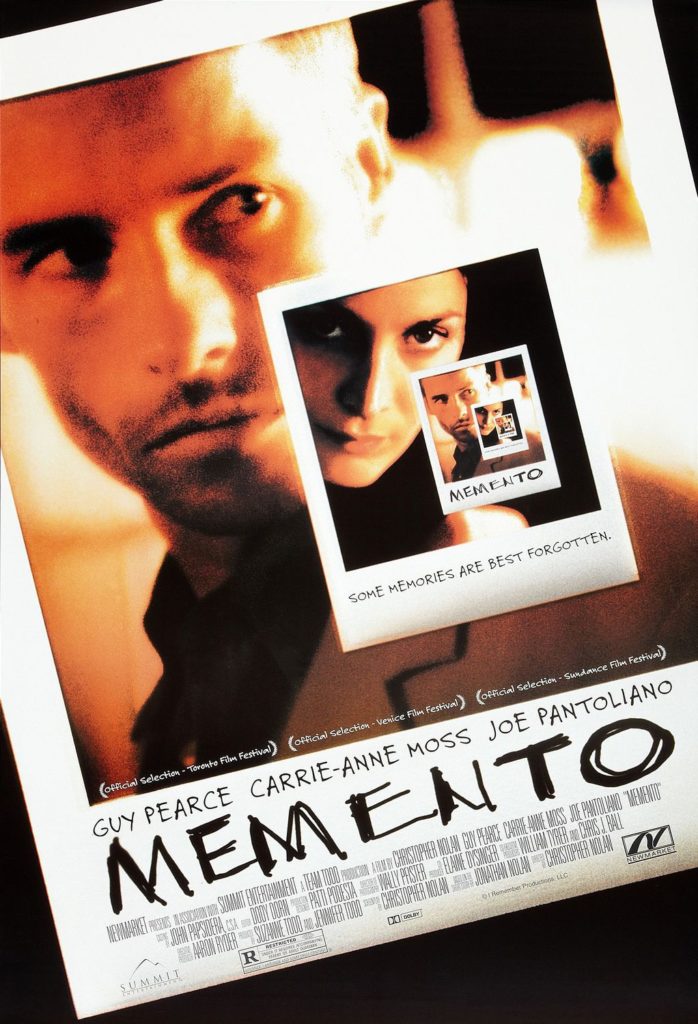
Crazy good – maybe Christopher Nolan’s best, at least by my reckoning. Some of his later works are more impressive (Inception), more of a spectacle (Interstellar), more creative (The Prestige), more fun to watch (The Dark Knight). But this one is clever, grounded, and as straightforward as a film this untrustworthy can be.
What stuck out most to me on this viewing: the humor. I looked at some mutuals’ Letterboxd reviews before watching and several mentioned surprise over how funny it was at times. They’re right, I think. Some of Guy Pearce’s monologues have this sort of faint curl-of-the-lip delivery.
I did a pole on Instagram: “Who had the better second film? Christopher Nolan (Memento) or Darren Aronofsky (Requiem for a Dream)?” Aronofsky won 60%-40%.
4. Children of Men (2006)

A total masterpiece in cinematography! Some of the best long takes ever, I think. Maybe if I had any complaints it would be that it’s a little too dark at times, but I give this film a pass because (obviously) this fits the film’s tone very well, and also because I think it came out a little before making films hard to see what the hell’s going on (and also way too teal) became really popular.
As the story goes, Cuarón wanted to cut during the famous 6-7 minute long take because of the splatter of blood on the camera lens in the bus – but his direction got lost in the sound of an explosion. I don’t know how true this is, but that whole take has to be one of the most impressive in all of film.
And then – wow. The scene where Theo is escorting Key down the stairs. The soldier’s faces. The way that one soldier comes in with his rifle raised, pauses, comprehends what he’s seeing, and immediately screams for a cease fire. The disbelief and fear on the soldiers’ faces, and the hope and wonder on the immigrants’ faces. It’s very powerful. I think one could make an argument for the film being a little heavy-handed, especially in this scene – but I wouldn’t want to watch a version of this film with any more or any fewer analogies and symbols and pulls-of-the-heartstrings.
5. The Fountain (2006)
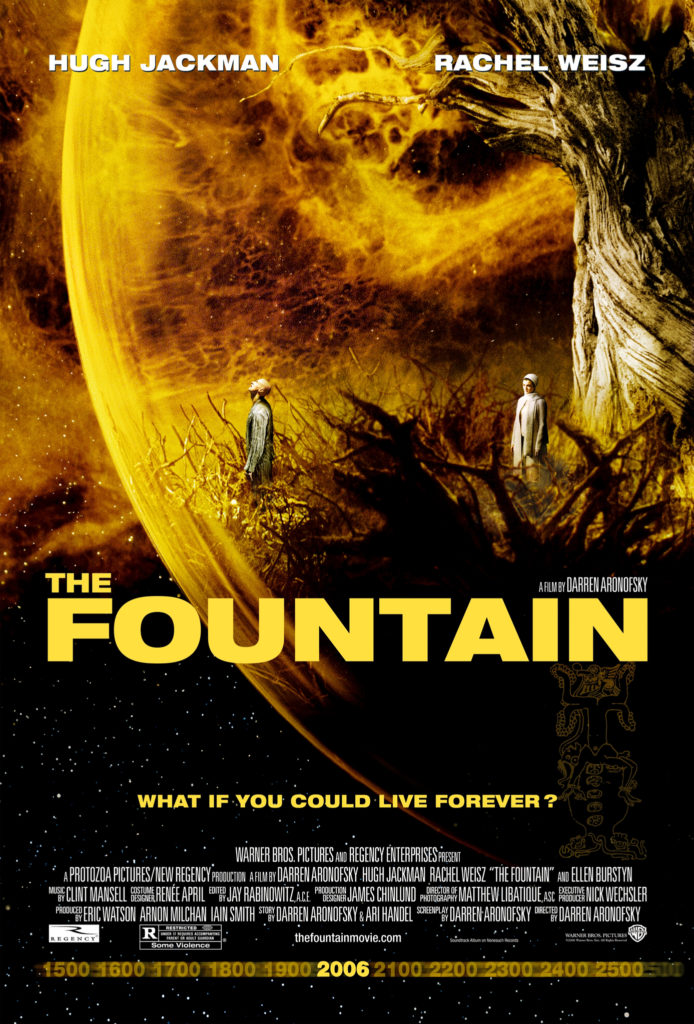
After deciding to watch this film I began to worry about how people would think of me, seeing as none of the films I’d logged had been released before 2000. But I didn’t care, because The Fountain and Children of Men represent what I was looking forward to most about this marathon – rewatching movies I haven’t seen in a long time and wanted to rewatch, or movies that I’ve seen recently and really, really loved. Requiem was my “favorite movie” for a long time, despite having only seen it once in high school. Children of Men was much the same, though slightly further down the list. The Fountain, however, is a movie I first saw last year.
I could see people criticizing this as being too cerebral, too pretentious. There’s the momentous strings-centric soundtrack, the psychedelic imagery of bald Hugh Jackman and his dearly tree entering Xibalba, the medical jargon thrown around in the operating room… it seems like the kind of film a casual viewer might make fun of “hardcore movie buffs” with, if that makes any sense at all.
At the heart of it all The Fountain is an incredibly moving story about life, death, and love. True to form Aronofsky squeezes much out of an already talented cast. The three intertwining narratives fit together perfectly: there’s the “real” story, Hugh Jackman’s Tommy Creo racing to find a cure for his terminally ill wife (Rachel Weisz as Izzi Creo). There’s Jackman as the conquistador Tomás in real-life-Izzi’s novel, searching for the tree of life to save his beloved Queen. And there’s a fictional Tommy floating in a bubble towards a dying star, all imagined in the head of real-life Tommy (yet seemingly taking place thousands of years in the future). The underlying message? Death is inevitable. This is nothing new. But Aronofsky offers an easy way and a hard way of dealing with this – and for Tommy the easy way is developing an impossible, miraculous cure for death itself. This is easier than coming to terms with his true love’s unstoppable demise, easier than spending time with her before she dies – because it must be hell to love something so deeply when you know that it will be over far too soon.
6. Casablanca (1942)

Like I said, I was starting to worry about how my list would come across to actual film buffs. Not that I care. But the average age of the movies on my list is somewhere between 13 and 17 years old, with several being from the last five years. That makes sense when you consider that I’ve only relatively recently become a movie fan.
Casablanca almost didn’t make the cut! I like it a lot, and I like Humphrey Bogart a lot in the only two movies I’ve seen him in (this and Lloyd Bacon’s 1937 proto-noir Marked Woman). But I saw it for the first time earlier this year in my History of Film class. It’s old enough to have a massive reputation, but I saw it recently enough that I hesitated to include it this month.
7. The Seventh Seal (1957)
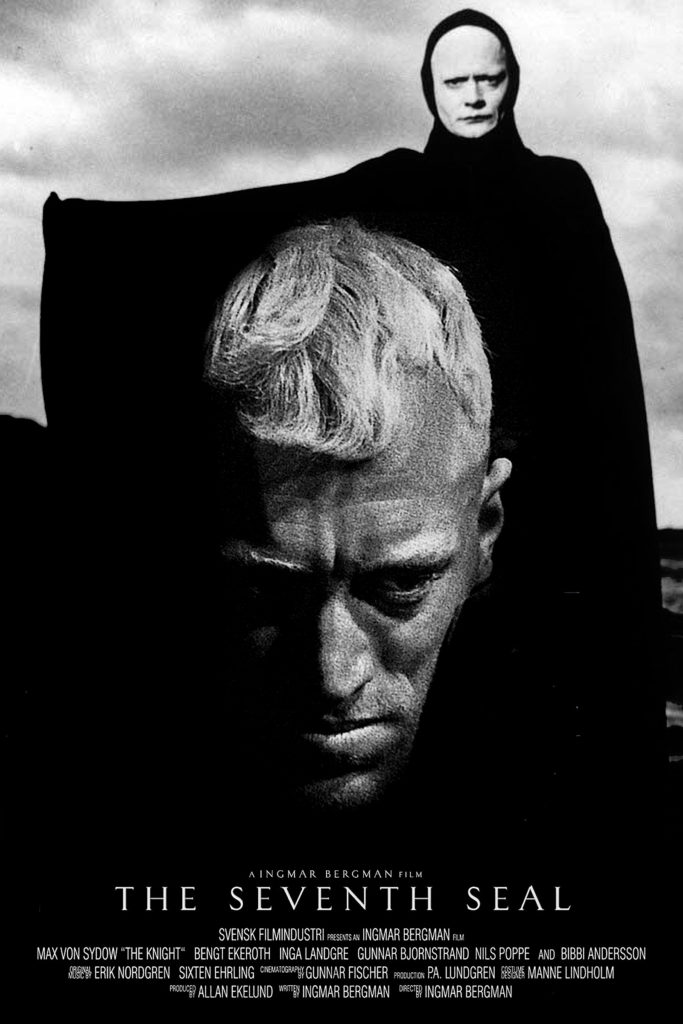
This is the second oldest movie on my list for the month; the first, of course, is Casablanca. I sort of regret watching both one after the other, and wish I would have spaced them out more. But I HAD to watch The Seventh Seal on the seventh day.
Above anything else this movie deserves all of the praise that it gets. I never know how to describe it, or even really explain what I enjoy about it. Is it the way one gets sucked right into the scenes? Is it the dreamlike quality of the set design and costumes? (I couldn’t help but think of the design of Murnau’s 1927 Sunrise: A Song of Two Humans, and I honestly wish I could have worked that movie into the schedule.) Perhaps it’s Max von Sydow’s gravitational draw, or the masterful cinematography of Gunnar Fischer. I don’t know; I just can’t ever put my enjoyment of this movie into words.
One of the things I like most is its humor. I laughed out loud at The Seventh Seal more than I laugh at some modern comedies! The confrontation between Plog and Skat, and the way Jöns feeds Plog lines? Absolutely hilarious! The dialogue is brilliantly witty, such that even through subtitles its personality is palpable.
Another is that its’s simply a good looking film. I forget how enjoyable 2:3 can look, and how important every aspect of imaging – light, contrast, blocking, angle, et cetera – can become when color is removed from the picture. The frame is tight. There’s not a ton of room to play with, or so it would seem – but I never felt cramped or boxed in watching The Seventh Seal.
That’s the first seven films through the first seven days of Movievember 2022. I don’t have a better name for the marathon, though I did briefly consider “Favorites in Fall”. I’ll be (attempting) to post here once a week, and I’ve been doing an OK job of logging on my social media channels. In the meantime – I’m going to try to write a follow-up post on my first full month in Omaha.
0 Comments